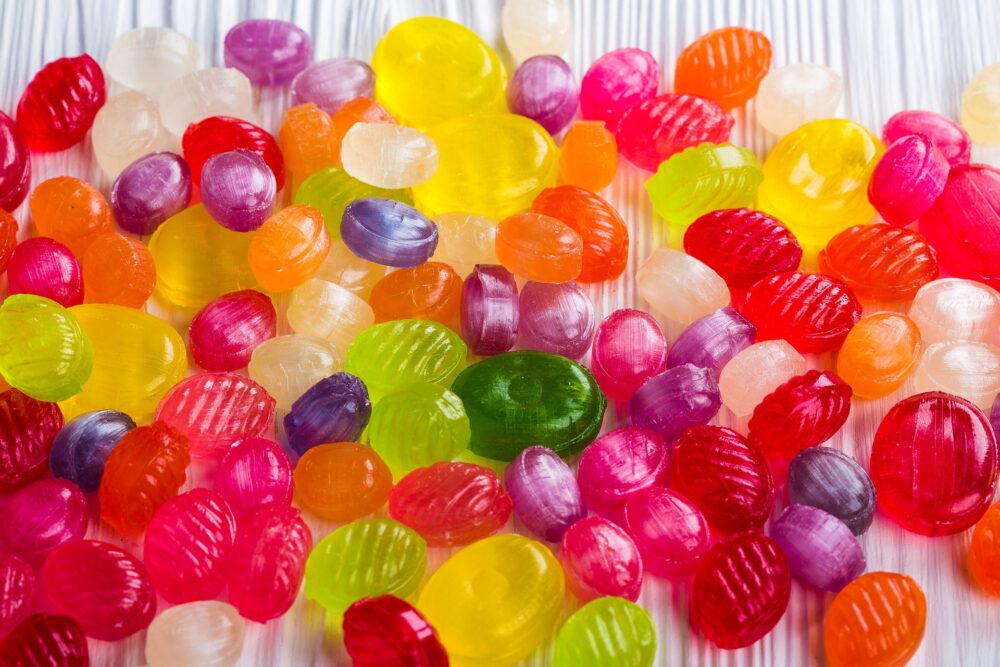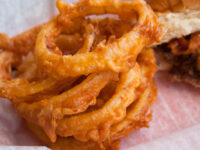There’s much to love about Halloween: elaborate costumes, spooky decorations, time with friends, and of course, candy. After all, what’s Halloween without the sacks of M&Ms, Twix, and Starbursts?
The answer is much healthier — but most people know only this simple fact. What’s really hiding inside Halloween candy?
A familiar ingredient is high fructose corn syrup (HFCS). HFCS is a corn-based sweetener, and is often used to provide a soft, moist texture that helps make products fresher for longer. However, excessive consumption of foods with HFCS is thought to play a major role in the obesity epidemic.
Texture is created with ingredients such as lecithin, glycerides, and partially hydrogenated oils (PHOs). Lecithin and glycerides are emulsifiers, or chemicals that help oil and water blend. They reduce stickiness and make the texture smoother, creamier, and more consistent. Similarly, PHOs are also used to obtain a more desirable texture; however, since they are trans fats, they can lead to heart complications by increasing LDL (bad cholesterol) levels and decreasing HDL (good cholesterol) levels. As such, PHOs were recalled from food products by FDA order in 2018. Hydrogenated oils, which are used today, don’t have trans fat, but they do have saturated fat, which also increases LDL levels.
However, excessive consumption of foods with HFCS is thought to play a major role in the obesity epidemic.
Halloween candy gets its look through the use of dyes. Two of the major dyes are Red 40 and Yellow 5, which are coloring agents derived from petroleum and contain low levels of benzidine, a carcinogen. To get that final shine, manufacturers will use carnauba wax, which comes from the leaves of the Carnauba palm.
Pick some of the healthier options, like Peanut M&Ms and Reese’s Peanut Butter Cups, both of which contain protein and fiber. Conversely, avoid Smarties, which are full of empty calories, and Airheads, which contain artificial colors and nothing but pure sugar.
If some of these ingredients sound alarming, don’t panic — indulging in a small quantity of sweets just once a year won’t have any long-lasting ramifications. However, if you’re still concerned, you can pick some of the healthier options, like Peanut M&Ms and Reese’s Peanut Butter Cups, both of which contain protein and fiber. Conversely, avoid Smarties, which are full of empty calories, and Airheads, which contain artificial colors and nothing but pure sugar. If you want a break from candy entirely, you can also try dark chocolate–covered apples — which are great for heart health with flavonoids and quercetin, an anti-inflammatory compound — and pumpkin seeds, which are full of antioxidants.
So this Halloween, don’t just have the best costume in the room — make sure that you have the best eating choices, too.
Journal of Education, Health and Sport (2020). DOI: 10.12775/JEHS.2020.10.09.090
https://www.everydayhealth.com/diet-nutrition/diet/best-and-worst-candies-for-your-health/
https://medlineplus.gov/ency/patientinstructions/000838.htm
https://healthmatters.nyp.org/whats-really-in-your-kids-candy/
https://sites.udel.edu/chs-udfoodlab/2019/10/09/healthy-halloween-snacks/

